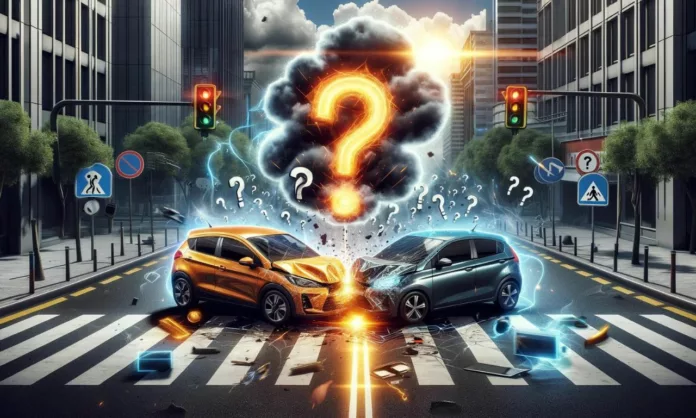If you find yourself involved in a car accident where the other driver is at fault, but you don’t have insurance, the situation can become complicated. Despite the complexities, it’s important to understand the steps and potential consequences of such a scenario. This article aims to provide a clear, step-by-step breakdown of what happens in such situations.
Table of Contents
Step 1: Assessing Immediate Safety and Legal Obligations
First and foremost, ensure that all parties involved in the accident are safe and seek medical attention if necessary. It’s crucial to call the police to the scene, as a police report will be vital in documenting the accident, regardless of your insurance status.
Step 2: Information Exchange and Documentation
Even without insurance, you should exchange information with the other driver, including names, contact information, and vehicle details. Take photos of the accident scene, damage to all vehicles involved, and any relevant road conditions or signs. This documentation can be crucial in the claims process or any legal proceedings.
Step 3: Understanding the Legal Implications
Driving without insurance is illegal in most states, and you may face penalties such as fines, license suspension, or even criminal charges, depending on your location. However, the accident’s fault is a separate issue. If the other driver is responsible for the accident, their insurance is typically expected to cover the incurred damages. But, your lack of insurance might limit your ability to claim certain benefits, like personal injury protection (PIP) or uninsured motorist coverage, which you would typically have under your own policy.
Step 4: Dealing with the At-Fault Driver’s Insurance Company
You can file a claim with the at-fault driver’s insurance company for damages to your vehicle and any medical expenses. Be prepared for the insurance company to investigate the claim thoroughly, especially since you lack insurance. They may scrutinize the claim more closely, so ensure all your documentation is in order.
Step 5: Potential for a Lawsuit
If the at-fault driver’s insurance company refuses to compensate you adequately, or if there are disputes about the fault, you may need to consider legal action. Consulting with an attorney who specializes in auto accidents can provide guidance on whether a lawsuit is a viable option and help navigate the complexities of the legal system.
Step 6: Mitigating Future Risks
Regardless of the accident’s outcome, it’s crucial to address your lack of insurance. Obtain at least the minimum required auto insurance to avoid future legal and financial risks. This step is not only a legal requirement but also a critical protection for you in case of future incidents.
Conclusion
Being involved in an accident without insurance can be daunting, especially when the other driver is at fault. While the lack of insurance complicates the situation, it doesn’t absolve the at-fault driver’s responsibility to cover the damages. It’s essential to follow the steps outlined above, from ensuring safety and documenting the accident to possibly seeking legal recourse. Most importantly, rectifying the lack of insurance will safeguard against future risks and ensure compliance with the law. Remember, navigating this process may be complex, and consulting with legal and insurance professionals can provide personalized advice and support tailored to your specific situation.

